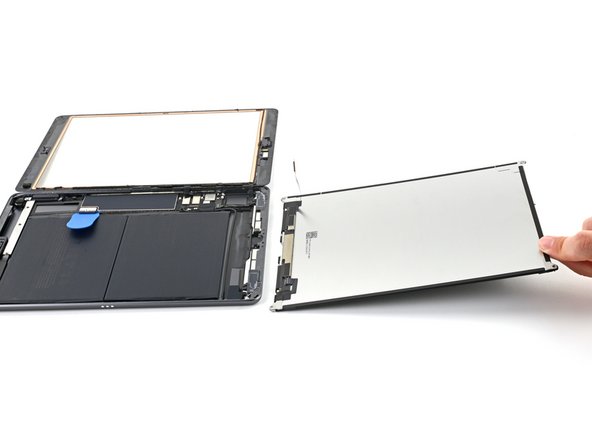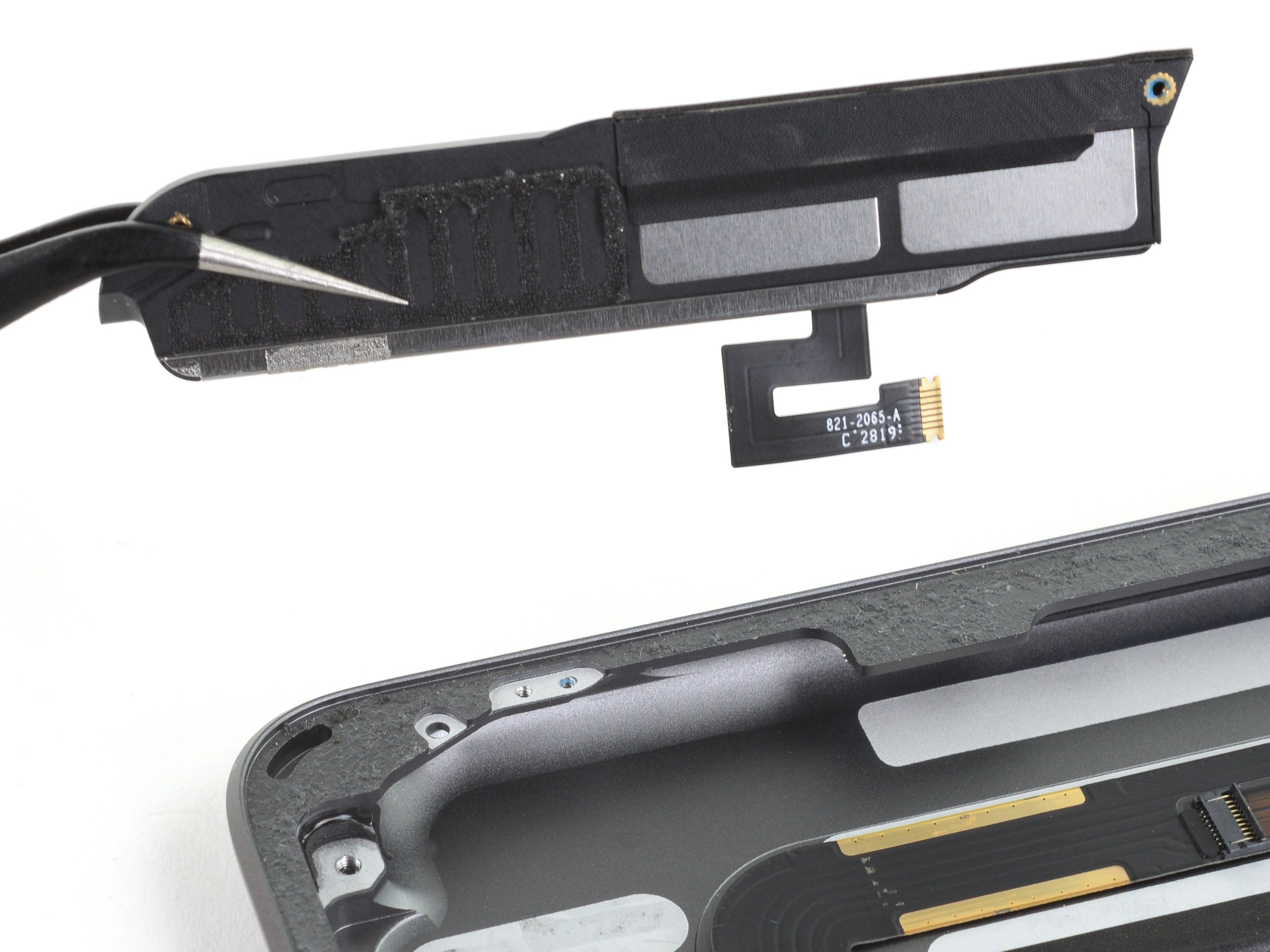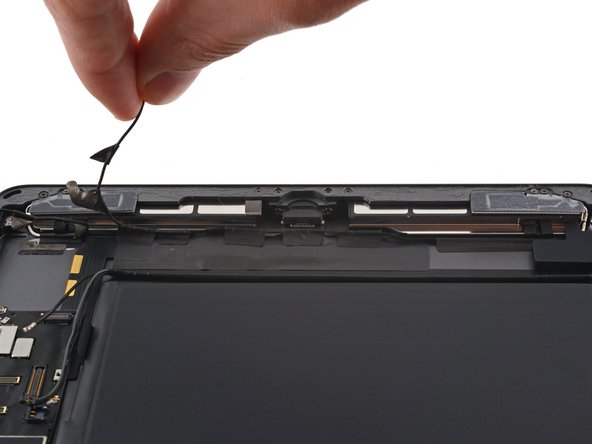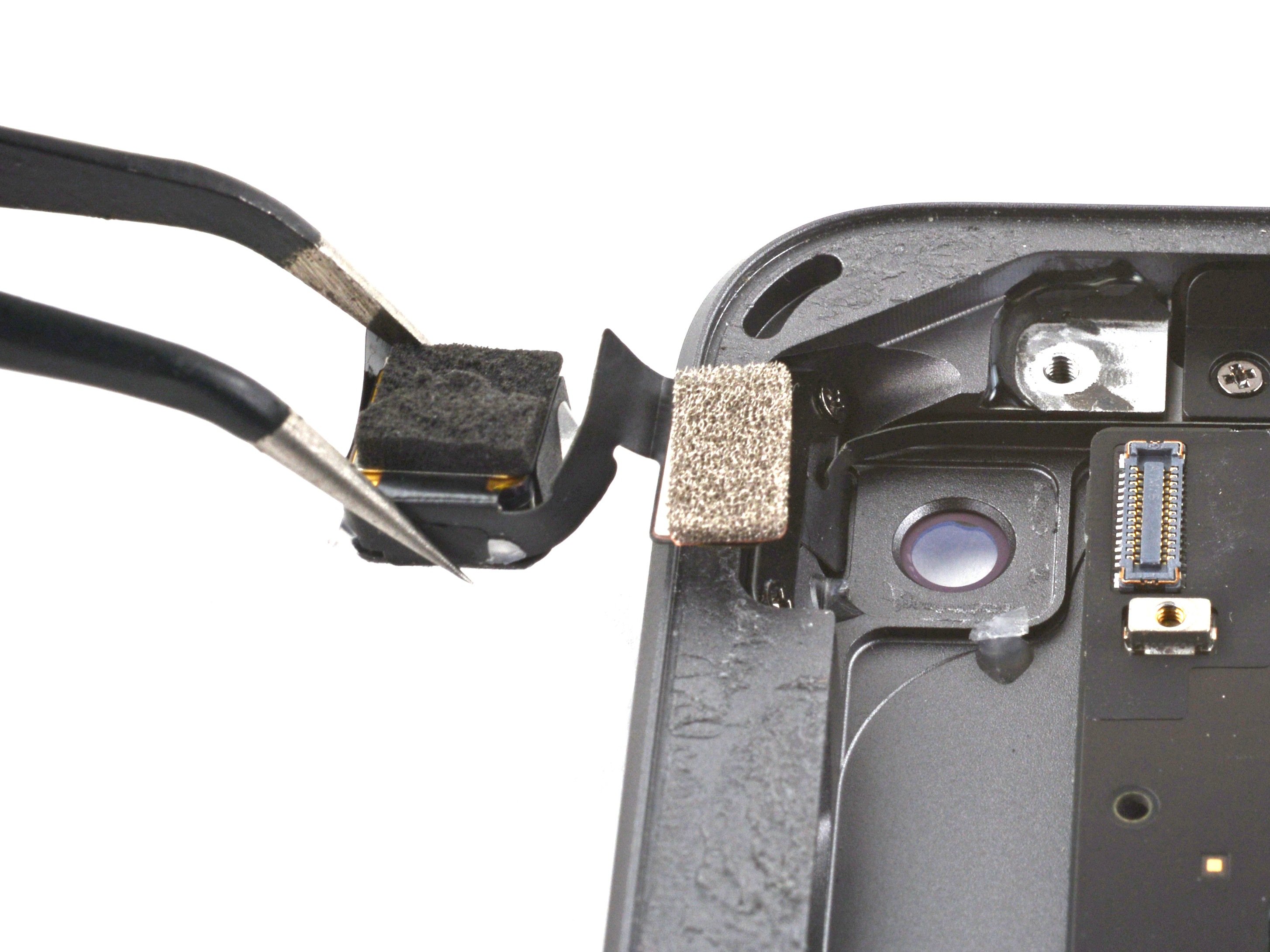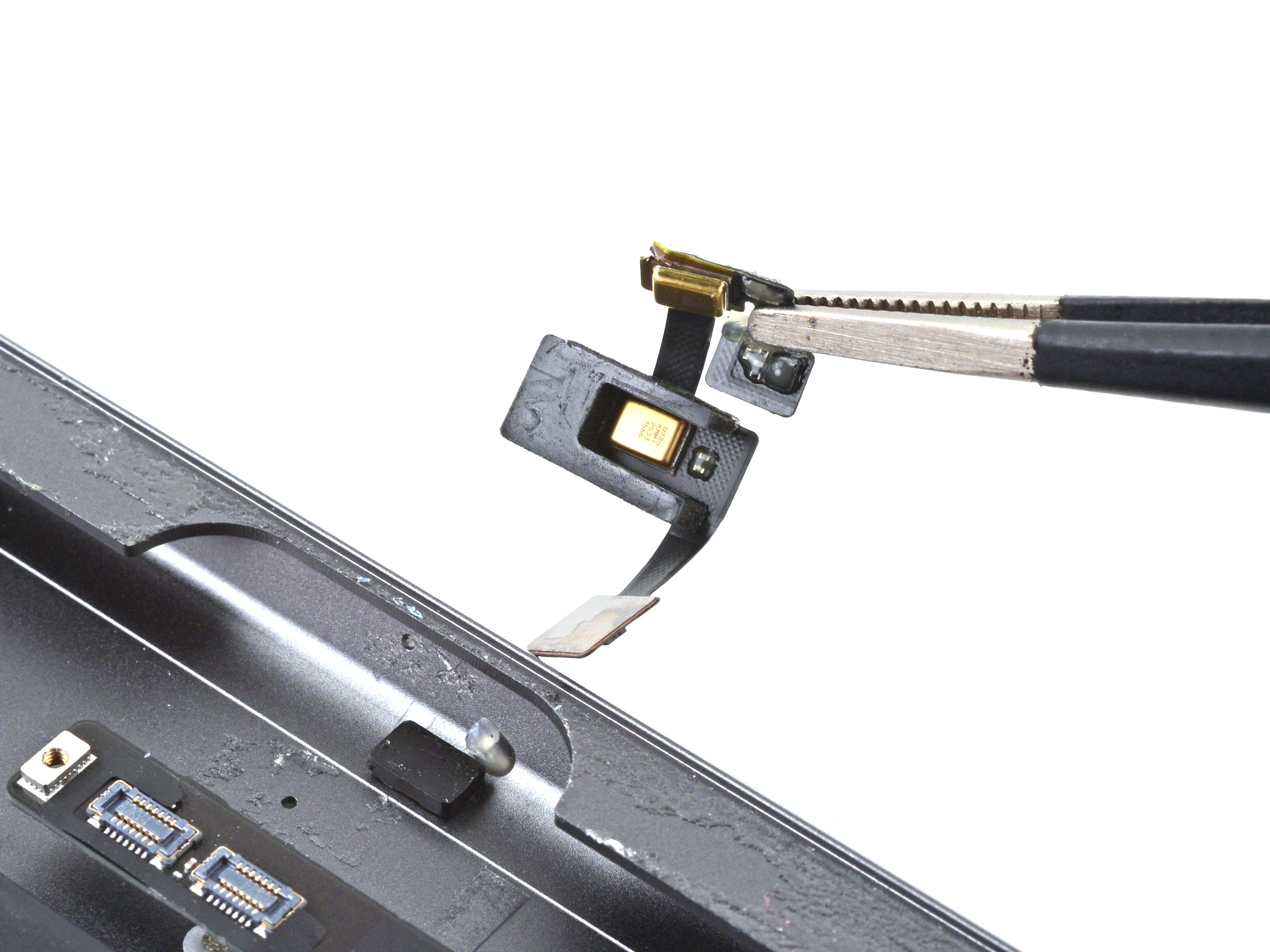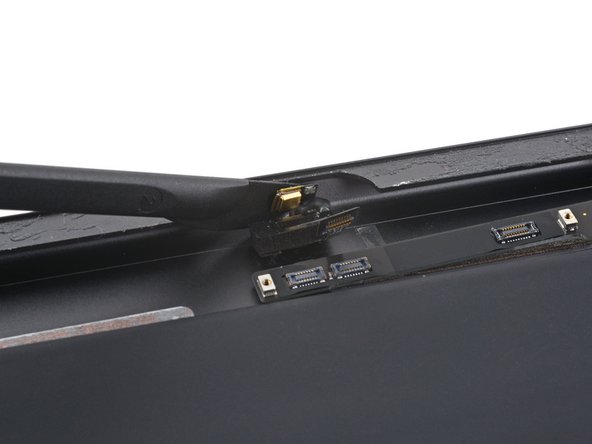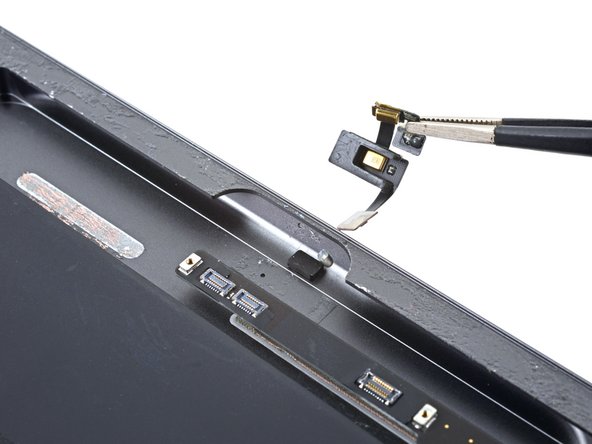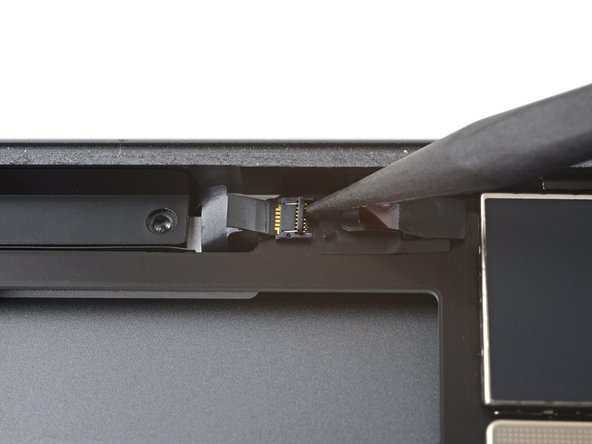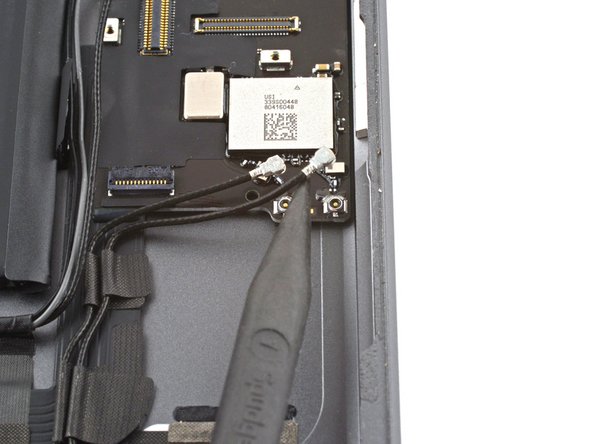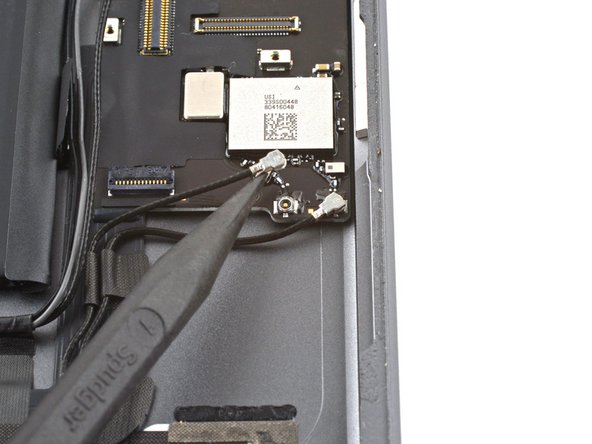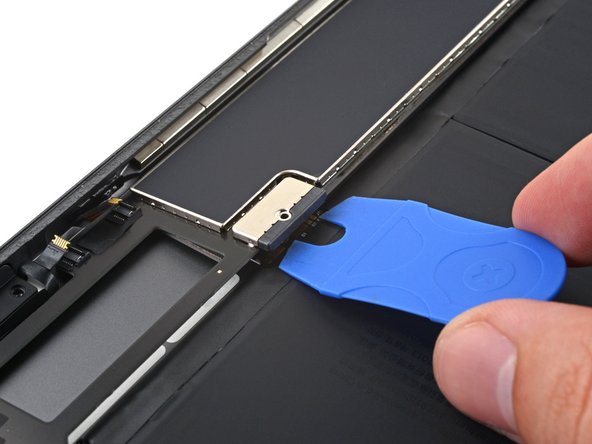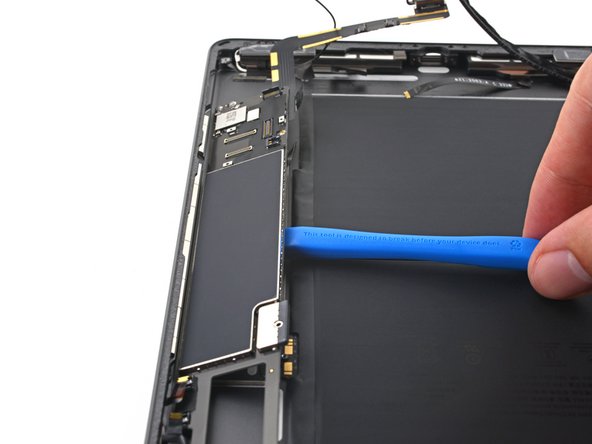Duration: 45 minutes
Steps: 52 Steps
The home button’s Touch ID sensor is linked to the logic board. To keep that sweet Touch ID working, you’ll need to carefully move and glue the original home button onto the new front panel assembly. Don’t rush – this is the secret sauce to keeping your device as smooth as ever!
Follow this guide to swap out the screen digitizer on an iPad 8 Wi-Fi. The digitizer here is just the front glass and touch sensor—it doesn’t include the LCD underneath. Heads up: this is for the Wi-Fi model only; if you have the LTE version, check out the link above. Since the home button’s Touch ID sensor is tied to the logic board, keep it safe by transferring and gluing the original home button onto your new front panel to keep Touch ID working. When disconnecting the battery, proceed with care—battery contacts are fragile and bending or breaking them can cause permanent damage. If you decide to skip isolating the battery, stick to non-metal tools unless absolutely necessary (like removing screws) to avoid short circuits and damage to sensitive components. Some photos might be from similar models and look a bit different, but these won’t change the steps you need to follow.
Step 1
– Warm up your trusty iOpener and let it cozy up to the left edge of your device for a solid two minutes.
Tools Used
Step 2
– While the adhesive is doing its thing, keep an eye out for these delicate spots that are a bit sensitive when prying:
– Front camera
– Antennas
– Display cables
Step 3
In the next three steps, we’ll show you how to use the Anti-Clamp, our nifty tool designed to make opening things way easier. If you don’t have one, no worries—just skip ahead three steps for another method.
Want the full scoop on how to use the Anti-Clamp? Check out this handy guide.
If the surface of your device is too slippery for the Anti-Clamp to get a good grip, just stick on some tape to make it grippier.
– Give that blue handle a little tug backwards to free the Anti-Clamp’s arms!
– Set your iPad on a sturdy object so it sits nice and level between the suction cups.
– Place the suction cups close to the middle of the left edge—one at the top and the other at the bottom.
– Keep the bottom of the Anti-Clamp steady and press down firmly on the top cup to create a solid suction.
Step 4
– Slide the blue handle forward to lock the arms in place.
– Rotate the handle clockwise a full 360 degrees, or until the suction cups begin to stretch.
– Keep an eye on those suction cups—make sure they stay lined up. If they start to drift out of sync, just loosen them a bit and realign the arms before moving on.
Step 5
Take it easy! Just give it a gentle half turn at a time, and then chill for a minute between each twist. Let the Anti-Clamp and a little patience do their magic for you.
Want the full scoop on how to wield a hair dryer like a pro? Dive into this guide.
If your Anti-Clamp isn’t opening up enough, just warm it up a bit more and twist the handle clockwise half a turn to get the job done.
– Give it a minute to let that adhesive loosen up and create a nice little gap for you to work with.
– Not feeling enough heat? A blow dryer along the left edge of your iPad should do the trick.
– Once that Anti-Clamp has worked its magic and made a gap, gently slide your opening pick under the digitizer.
– You can skip the next step. Keep going!
Step 6
If your screen is sporting some serious cracks, don’t fret! A bit of clear packing tape can help the suction cup stick on better. If you’re feeling adventurous, you can also use some super-strong tape instead of the suction cup. And if you’re really in a pinch, a little superglue on the suction cup can do the trick to hold it to the shattered display. Just remember, if this feels a bit too tricky, you can always schedule a repair.
– Once the screen feels warm, grab your suction handle and gently place it near the left edge—right by the frame. You’re aiming to make the magic happen as close to the edge as possible.
– Lift the screen using the suction handle, just enough to create a tiny gap between the digitizer and the frame. It’s like a little stretch, just a little room for action.
– Slide an opening pick into that gap you just created. Take it slow, work your way around, and the rest will follow.
Tools Used
Step 7
No sweat if you spot the opening pick poking through the digitizer—just gently slide it out. The LCD should stay safe, but be careful not to leave any sticky adhesive behind; it’s a pain to clean up later.
– Pop a second opening pick into that lovely gap you just made.
– Gently glide the pick towards the bottom-left corner of your device to free up that pesky adhesive.
– Keep the pick snugly in the bottom-left corner to stop the adhesive from getting all clingy again.
Step 8
– If the opening pick gets stuck in the adhesive, just give it a little roll along the side of the iPad to keep the adhesive separating smoothly.
Step 9
– Gently slide your first opening pick toward the top-left corner to loosen up that stubborn adhesive.
– Keep the pick wedged in the top-left corner so the adhesive doesn’t sneak back together.
Step 10
– Heat up your iOpener and gently press it against the top edge of your device for about two minutes. It’ll help loosen things up, making the next steps smoother. Patience is key here!
Tools Used
Step 11
– Give that pick a little spin around the top-left corner of your device to break free from the adhesive’s grip!
Step 12
Keep the pick away from the front camera lens to avoid any accidental damage. The next steps will help you steer clear of that!
– Gently slide the opening pick along the top edge of the device, stopping right before you hit the front camera—easy does it!
Step 13
– Gently pull the pick out so that just the tip stays tucked between the digitizer and the frame.
– Carefully slide the pick over the front camera area to loosen up that stubborn adhesive.
– Keep the pick resting near the right side of the front camera before moving on to the next step.
Step 14
– Pop that pick back in, and give it a little slide up towards the top-right corner of your device to fully break free the top adhesive. You got this!
– Once you’re there, leave the pick hanging out in the top-right corner to keep that pesky adhesive from sticking back together. Nice work!
Step 15
– Warm up that iOpener and give a cozy hug to the right edge of your device for a solid two minutes.
Tools Used
Step 16
– Gently twist the pick around the top-right corner to loosen up that stubborn adhesive.
Step 17
The display cables can be found about halfway up from the bottom of the iPad. Once you slide your way up, stop when you’re about three inches from the bottom. You’ve got this!
– Pop in a new opening pick and slide it gently to the middle of the iPad’s right edge.
Step 18
– Warm up an iOpener and place it on the bottom edge of your device, letting it do its thing for two minutes.
Tools Used
Step 19
Keep the pick’s spin chill near the corner—too much twist and you might mess up the antenna.
– Gently slide the pick down to the bottom-left corner to loosen that sticky adhesive.
– Keep the pick resting in the bottom-left corner while you get ready for the next step.
Step 20
Slide the pick gently only toward the home button—going the other way might mess with the antenna, and we don’t want that!
If you need to glide that pick over this section again, just pop it out and reinsert it at the bottom-left corner. You’ve got this!
– Slide a fresh opening pick into the little gap you just made along the bottom edge of the iPad.
– Gently glide the pick over the antenna, stopping right before you hit the home button.
– Leave the pick hanging out just to the left of the home button before moving on to the next step.
Step 21
Gently slide the pick in no more than 1 mm to keep the right antenna safe and sound.
– Pop an opening pick into that little gap you just made.
– Gently slide the pick under the home button, angling it toward the bottom-right corner, making sure only the tip is sneaking between the digitizer and the frame.
Step 22
Just a friendly reminder: slide that pick towards the home button, not away! Going the wrong way could mess with the antenna, and we don’t want that. Keep it smooth and easy!
If you find yourself needing to glide the pick over this spot again, just pull it out and pop it back in at the bottom-right corner to keep things moving smoothly.
– Slide the pick back in and gently work it toward the home button to fully break through the stubborn adhesive at the bottom.
– Rest the pick just to the right of the home button before moving on to the next step.
Step 23
– Warm up an iOpener and stick it to the right edge of your device for a solid two minutes to loosen things up.
Tools Used
Step 24
Take it slow and steady here. Make sure the adhesive is nice and warm so it’s easy to work with, and carefully separate all of it using a pick. Don’t hesitate to pause and reheat if needed!
If you encounter a bit of stubbornness, just warm up those edges again and glide along with your trusty opening pick. You’ve got this!
– Give those two opening picks a little twist at the left corners of the iPad to gently nudge the digitizer upwards, helping to break free the last bits of adhesive along the way. You’ve got this!
Step 25
– Gently lift the left edge of the digitizer upward to help loosen the adhesive along the right side of the iPad.
Step 26
– While gently holding the digitizer in place, carefully slide an opening pick between the two display cables to break the last bit of adhesive free. You’re doing great!
Step 27
– After you’ve successfully separated all that sticky adhesive, gently swing the digitizer open like it’s a book and lay it flat next to the iPad.
– As you put everything back together, don’t forget to give the leftover adhesive a good clean-up using some isopropyl alcohol—oh, and if you’re reusing the digitizer, give it some love too! When it’s time to seal the deal, use our adhesive strips or those handy pre-cut adhesive cards.
– Keep an eye on those delicate display cables while you’re reassembling your device. Make sure they’re tucked away nicely beneath the LCD screen to keep them safe from any accidents.
Step 28
– Grab your trusty Phillips screwdriver and carefully take out the four screws holding the LCD to the frame—these little guys are 4.3 mm long, so keep an eye on them!
– As you tackle this repair, be sure to keep a close watch on each screw. It’s important to put them back in their original spots to keep your device happy and healthy.
– Don’t forget to peel away any tape that’s hiding those LCD screws. We want everything to be nice and visible for this repair adventure!
Step 29
Hold your horses! Don’t go yanking out the LCD just yet. It’s still hanging on by a flex cable, so let’s keep it connected for now.
– Grab your trusty spudger and gently pry the LCD away from its snug little home just enough to get a good grip with your fingers.
– Now, think of the LCD as a page in a book! Flip it over near the camera and let it gracefully rest over the home button end of the frame.
– Place the LCD on a clean, soft, lint-free surface, giving those display cables some room to breathe.
Tools Used
Step 30
– Grab your trusty Phillips screwdriver and get ready to tackle that pesky little 2.3 mm-long screw that’s holding the battery connector snugly to the logic board. With a bit of finesse, you’ll have it out in no time!
Step 31
These pictures give you a sneak peek of the battery connector hiding under the logic board. Keep them handy as you carefully disconnect the battery.
Notice the battery connector’s little cantilever springs on the logic board that press down on the battery’s contact pads. Since both the board and battery are glued in place, you’ll need to slide something thin and flexible between the contact points to break the connection safely.
Step 32
Take it easy when isolating the battery with a blocker! The battery contacts are delicate, and even a slight bend can cause some serious damage. Handle with care to avoid making things worse!
Make sure the logo on the battery blocker is facing upward—no upside-down shenanigans here.
Avoid shoving the battery blocker under the connector with too much force. If it’s being stubborn, try sliding a playing card under the logic board to gently disconnect the battery instead.
Ideally, the battery blocker or playing card should glide under the logic board smoothly, without any obstacles. Once in place, it should rest at about a 15-degree angle—just chillin’ there.
– Carefully slide the battery blocker under the logic board’s battery connector at about a 35-degree angle—smooth and steady wins the race.
– Keep that battery blocker right where it is while you continue working to keep things safe and sound.
Tools Used
Step 33
– Grab your trusty Phillips screwdriver and go ahead and unscrew the three 1.4 mm-long screws holding the display cable bracket in place. You’ve got this!
Step 34
– Grab those tweezers or use your fingers to gently lift off the display cable bracket. You’re doing great!
Tools Used
Step 35
– Gently use the flat end of a spudger to lift and unplug the LCD cable press connector.
– When reconnecting press connectors like this one, line up one side carefully and press down until you hear a click, then do the same on the other side.
– Avoid pressing in the middle—if the connector is off-center, those pins might bend and cause permanent damage.
Tools Used
Step 36
– Carefully lift the LCD off completely and lay it face down on a clean, soft, lint-free surface to keep it safe and sound.
Step 37
– Grab a pair of tweezers and gently peel away the tape that’s holding down the home button cable ZIF connector. You’re doing great!
Tools Used
Step 38
– Grab a spudger, an opening tool, or even your trusty fingernail to gently lift the little hinged locking flap on the home button cable ZIF connector. You’ve got this!
Tools Used
Step 39
– Grab a pair of tweezers and gently pull the home button ribbon cable straight out of the ZIF connector. Take your time, no need to rush!
Tools Used
Step 40
Be gentle and only pry on the connectors themselves—giving the logic board’s socket a hard time is a no-go if you want your iPad to stay happy and healthy.
– Grab your trusty spudger and use its flat end to gently lift and disconnect the two digitizer cable press connectors. A little wiggle, and you’re on your way!
Tools Used
Step 41
Be careful not to snag or rip the home button ribbon cable—it’s a delicate little thing. Handle with care!
– Grab your trusty spudger and use the flat end to gently lift the vibration isolator from the bottom-right corner of the device.
– Now, go ahead and remove the vibration isolator. Nice job, you’re one step closer!
Tools Used
Step 42
The home button cable is gently held in place with a bit of adhesive. Just a little sticky magic keeping it secure!
– Grab your trusty tweezers and gently lift the home button cable away from the frame with a steady hand.
Tools Used
Step 43
Grab an opening pick and gently slice through any stubborn adhesive still holding the front panel assembly to the frame.
Without proper insulation, parts of the digitizer might short out against other components, leading to wonky touch responses.
This insulation is sneaky—it’s invisible to the naked eye and isn’t the same as the foam dust barrier strips you often see on iPads.
– First up, it’s time to remove the front panel assembly. Get that out of the way, and you’re one step closer to your goal.
– Now, if you’re noticing any weird ‘ghost’ or ‘phantom’ touch issues with your new display, don’t sweat it! Just add a very thin layer of insulating tape (Kapton or polyimide tape works great) to the areas highlighted on the back of the panel. But, if you’re using a new digitizer, it probably comes with the right insulation, so no tape needed in that case!
– Before you reassemble everything, make sure to clear away any leftover adhesive from your device. Give those glued areas a good cleaning with some high concentration isopropyl alcohol (90% or higher) and a lint-free cloth. This ensures that the new adhesive will stick just right!
– Last step: Test your iPad to make sure everything is working as it should. Then, using our adhesive application guide, add the pre-cut adhesive strips to the back of the display. Once that’s done, seal it up and you’re good to go!
Step 44
The home button cable is held down with a bit of gentle adhesive, nothing too sticky to worry about.
– Gently lift the home button cable off the back of the front panel using your fingers.
Step 45
If the adhesive is being stubborn, don’t force the pick—give the home button cable a gentle warm-up with an iOpener or a hair dryer to loosen things up.
– Gently slide an opening pick under the home button cable to free it from the front panel.
– Keep that pick gliding along until you hit the home button bracket.
Tools Used
Step 46
– Gently slide an opening pick beneath the top of the home button cable. This will help you free the metal contact from the home button bracket. A little patience goes a long way here!
Step 47
– Warm up an iOpener and press it onto the home button bracket for about thirty seconds.
Tools Used
Step 48
Be careful not to bend or warp the home button bracket; otherwise, your home button might lose that satisfying ‘click’ when you put it back together!
If the home button bracket starts to bend before it pops off, try dripping a little high-strength (90% or above) isopropyl alcohol on the bracket mounts to loosen things up.
– Grab your trusty opening tool and carefully pop off the home button bracket from the front panel. Nice and easy, no rush!
Step 49
– First, take off the home button bracket. It’s a quick move, so just give it a gentle nudge and it’ll come right off!
– When you’re putting that bracket back on, make sure to use a strong adhesive like E6000 to keep it snug on the front panel. You want it to stay in place, so don’t skip this step!
Step 50
Remember to apply pressure gently! The adhesive is clinging onto a sensitive gasket that can rip easily.
– Gently press the home button from the front panel, giving a little nudge to break free the adhesive that’s keeping it cozy in its spot.
Step 51
– Carefully remove the home button assembly.
– When putting things back together, make sure to move the home button gasket onto the new front panel or home button assembly.
– If your new panel is missing a spacer ring, don’t forget to swap over the one from your old setup.
– If you can, power on your iPad and check that everything’s working before applying new adhesive and sealing it up.
Step 52
– Now that you’ve got everything back together, just retrace your steps in reverse to make sure it’s all snug and in place.
– Got e-waste? Don’t let it sit around—find a certified recycler like anR2 or e-Stewards to give it a proper send-off.
– If things didn’t quite go as planned, don’t stress! A little troubleshooting might do the trick, or feel free to ask for some backup from our iPad 8 Answers community!
Success!





























































































